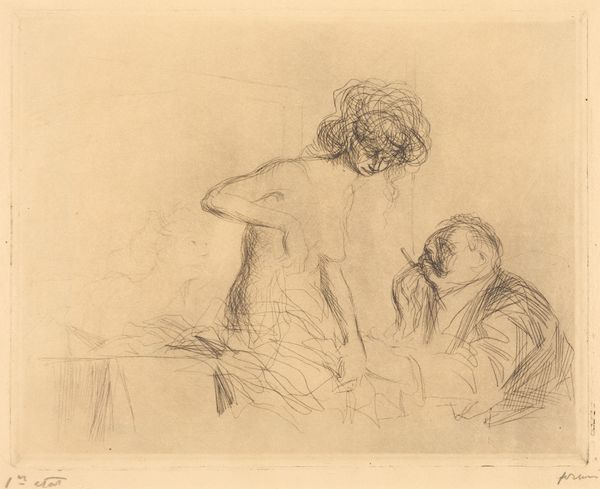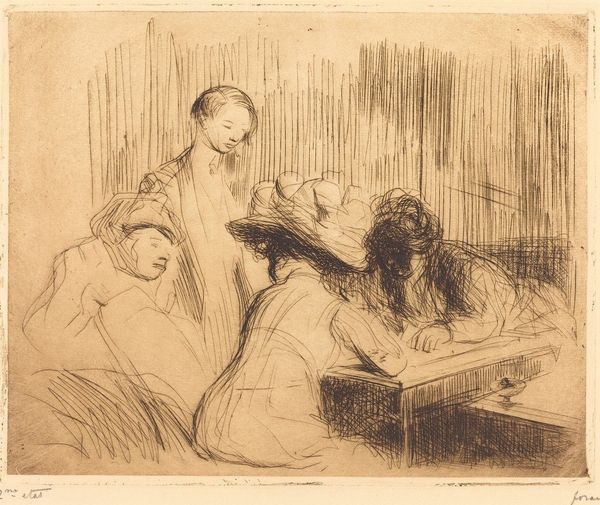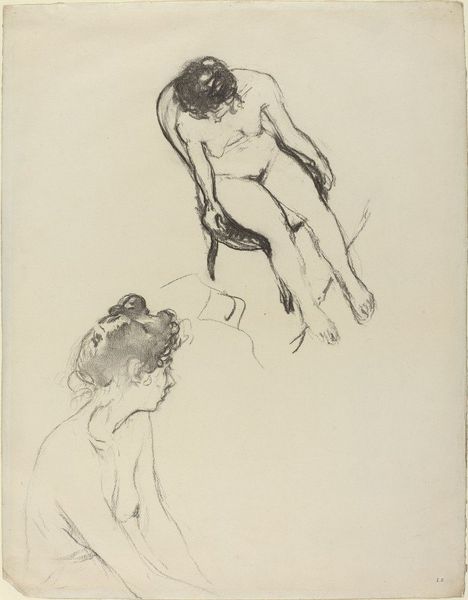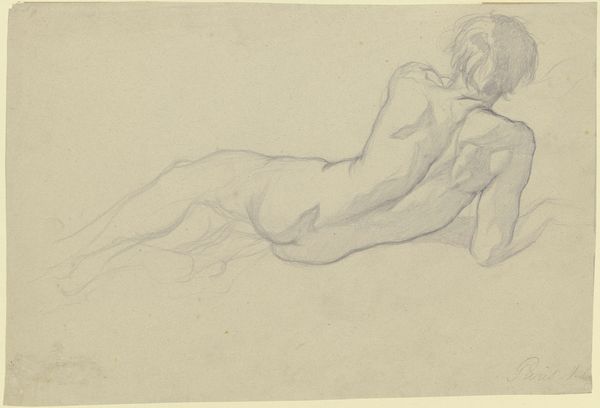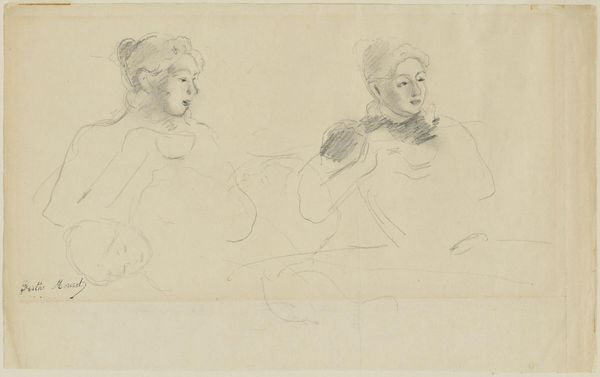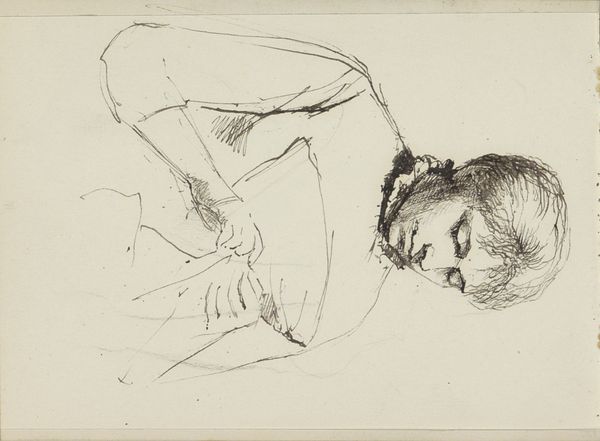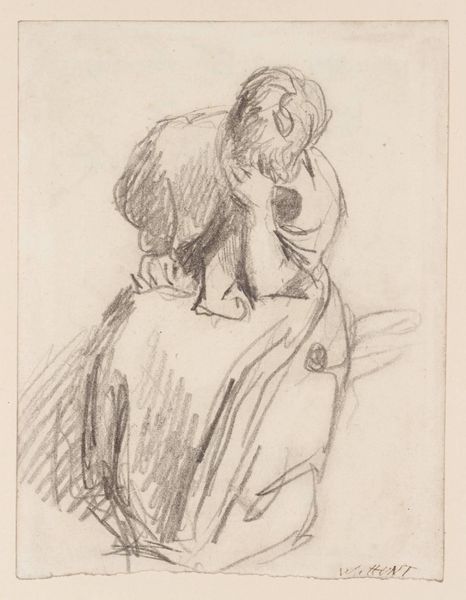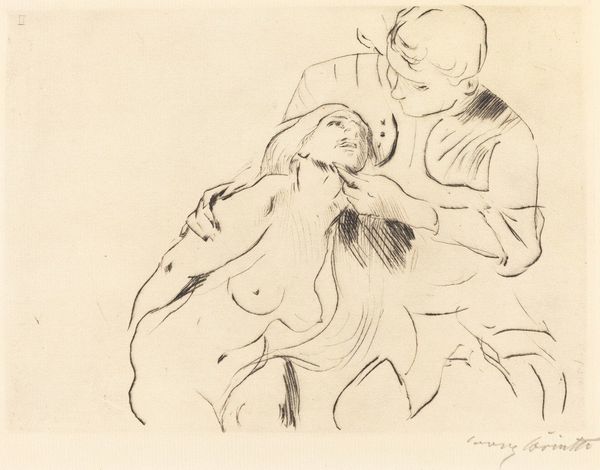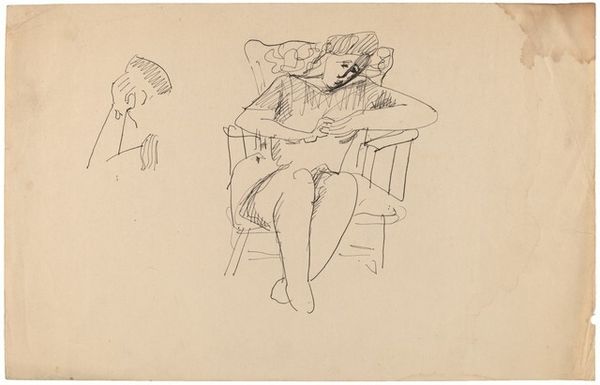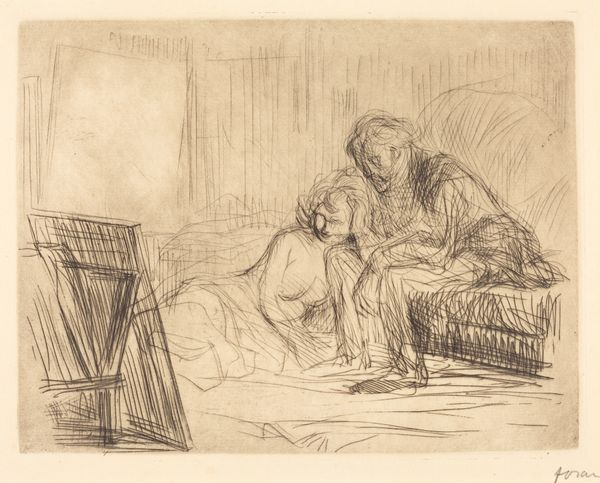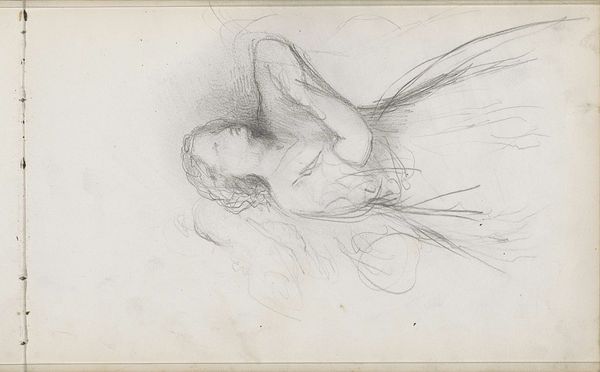
drawing, pencil
#
drawing
#
figuration
#
pencil drawing
#
intimism
#
pencil
#
watercolor
#
erotic-art
Copyright: Public Domain: Artvee
Curator: This delicate rendering is "In a Private Room" by Jean-Louis Forain, created around 1910. It’s executed in pencil and watercolor. What's your initial response to the artwork? Editor: An overwhelming sense of stillness. The monochromatic palette and sketchy lines create an intimate, almost voyeuristic atmosphere. There is a timeless feeling in this quiet domestic space. Curator: Precisely. Forain was known for his depictions of Parisian life, often focusing on marginalized figures, and there is a stark reminder in the figures of the time that society dictated the acceptable place of women in society and power. These kinds of depictions in this period in history helped change the trajectory of where women stood in society and in contemporary art. Editor: Absolutely. The loose linework and focus on capturing fleeting moments is classic turn-of-the-century artistic themes. The way the female figures are posed and rendered evokes a subtle blend of vulnerability and strength, especially with the way each woman in the artwork seem unaware and unaffected by the viewer. Curator: The theme of intimacy connects directly with broader historical and social dialogues concerning the male gaze and representations of femininity. Forain highlights what these women faced but offers it to the audience in a way that gives power and vulnerability at the same time. Editor: The artist employs visual cues that certainly have deep symbolic roots. The downcast gaze of two figures is thought provoking in connection with the positioning of the characters, while the partially unclothed female bodies, speak of the social expectations of the period that Forain wanted to uproot. Curator: I find that positioning of these women against the context of Parisian social mores adds layers to the image, allowing us to rethink female sexuality. Editor: Examining it now, it brings to mind the cultural narratives and shared mythologies surrounding representations of femininity, prompting dialogue with art history and feminist theory in the turn of the century. This helps bridge visual traditions with broader contemporary cultural debates. Curator: Agreed. It’s amazing how the cultural memory becomes alive by reflecting on the artwork’s nuanced observations regarding identity, gender, and class during a period of enormous social change. Editor: This work reminds us of the potential for imagery to inform, persuade, and inspire social dialogue beyond a singular historical moment. Curator: Precisely, I hope the dialogue inspires you all to look further and deeper than ever expected.
Comments
No comments
Be the first to comment and join the conversation on the ultimate creative platform.
